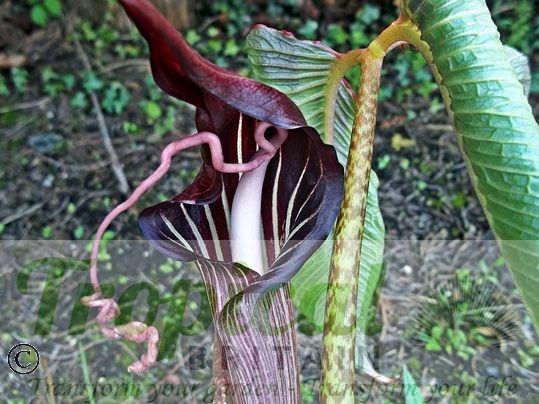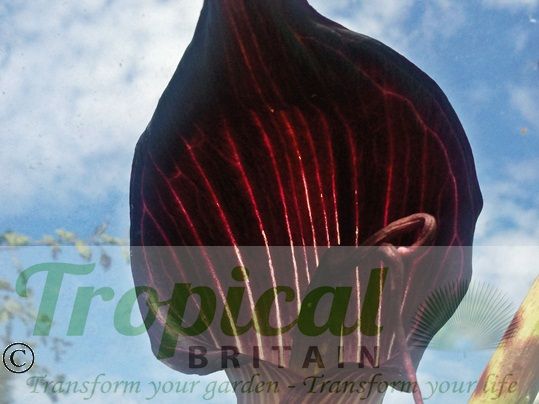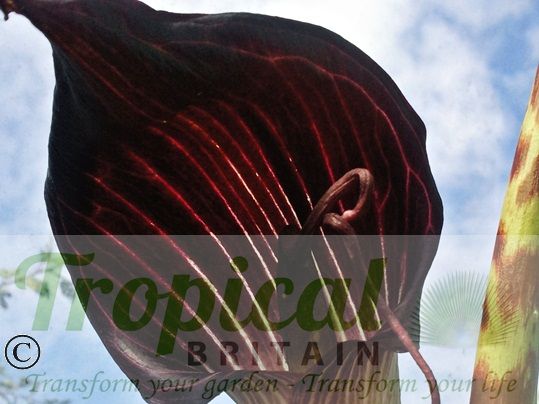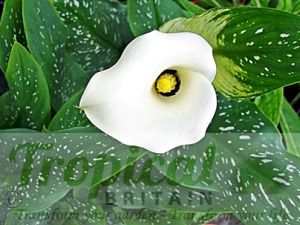Arisaema speciosum 'Magnificum'
Arisaema speciosum 'Magnificum' is a cultivar of the type species Arisaema speciosum selected for its large size and bigger spathes. Although sometimes refered to as an intraspecific variety it is not recognised as being taxonomically different from Arisaema speciosum however its overall larger and more impressive stature give it quite a different and distinctive appearance.
Arisaema speciosum is endemic to a large geographical area across the Himalayan region from Nepal, through Sikkim, Arunachal Pradesh and the northern part of West Bengal in India, to Bhutan, Southern Tibet, Northern Myanmar and the Gaoligongshan area of Yunnan, China, at elevations to 3500m in a habitat that is best described as temperate monsoon forest. It was first described by Nathaniel Wallich as Arum speciosum in 1824 but it was Carl Friedrich Philipp von Martius who first recognised its generic differences and placed it in the new genus Arisaema in 1832. The three recognised intraspecific varieties are Arisaema speciosum var. speciosum, Arisaema speciosum var. mirabile and Arisaema speciosum var. ziroense.
The tubers of Arisaema speciosum are different from most other Arisaema species being very large and stoutly cylindrical in shape rather than the rounded inverted-dome shape that is more often seen. The spathe on the 'Magnificum' cultivar is large and funnel-shaped and a chocalate maroon in colour with white stripes running vertically in a distinctive fan shape following the contours of the spathe. It has the characteristically peaked attenuated hood forming a pointed drooping tip which together with the extended appendage of the spadix give this species one of its common names, Double Whip Cobra Lily. Like many Arisaemas the spadix appendage is a remarkable curiosity of great length and wiggles out from the end of the spadix often in a twisted and curled manner or sometimes - lifted by the growing foliage - it extends upwards, as if nonchalantly thrown over the shoulder in its bid to attract pollinators. The foliage is equally dramatic, arising at the same time as the inflorescence but considerably taller, with usually one solitary very large trifoliolate red-margined leaf.
Like most Arisaemas, Arisaema speciosum 'Magnificum' requires excellent drainage to avoid rotting and surrounding the entire tuber in generous quantities of sharp sand, coarse bark and large grade shingle is recommended so that its growing roots can seek out the moisture it needs from the surrounding humus-rich soil. Water very sparingly as it begins to grow until the large emergent growth is well-established then increase watering throughout the growing season until the foliage starts to yellow and die down in the autumn then stop watering altogther. Given such treatment, a warm sheltered aspect and a thick mulch it is hardy in much of the UK although you may well be inclined to play safe and lift the bulbs in late autumn.
A choice cultivar. Highly recommended. Limited quantities available.
Additional Information
| Order | Alismatales |
|---|---|
| Family | Araceae |
| Sub-Family | Aroideae |
| Synonyms | Arisaema speciosum var. magnificum, Arisaema speciosum 'Himalayan Giant', Arum eminens, Arum speciosum, Arum speciosum var. eminens |
| Geographical Origin | Nepal, India, Bhutan, Tibet, Myanmar, China |
| Cultivation | A warm, sheltered aspect with dappled shade from overhanging branches. Excellent drainage and kept moist but not wet during the winter dormancy |
| Eventual Height | 75cm |
| Eventual Spread | 60cm |
| Hardiness | Hardy in much of the UK providing great care is taken to provide the correct free-draining yet moist soil in winter and given a thick winter mulch. The tubers can also be lifted in late autumn for storage once the foliage has died back |

Free DELIVERY
ON ALL ORDERS OVER £99THIS OFFER IS VALID ON ALL OUR STORE ITEMS.


















